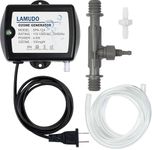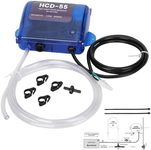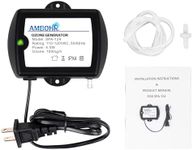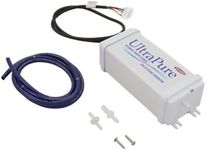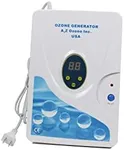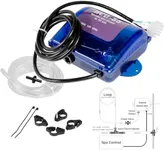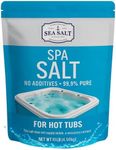Buying Guide for the Best Pool Ozone Generators
Choosing the right pool ozone generator can significantly improve the quality of your pool water by reducing the need for traditional chemical treatments. Ozone generators work by producing ozone gas, which is a powerful oxidizer that helps to eliminate contaminants and pathogens in the water. To find the best fit for your pool, you need to consider several key specifications that will ensure the generator meets your needs and provides optimal performance.Ozone OutputOzone output is the amount of ozone gas the generator produces, usually measured in grams per hour (g/hr). This spec is crucial because it determines the effectiveness of the generator in sanitizing your pool. For small pools, an ozone output of 0.5 to 1 g/hr may be sufficient. Medium-sized pools typically require 1 to 2 g/hr, while large pools may need 2 g/hr or more. To pick the right ozone output, consider the size of your pool and the level of contaminants you need to manage.
Pool Size CompatibilityPool size compatibility indicates the maximum pool volume that the ozone generator can effectively treat, usually measured in gallons or liters. This is important because using an undersized generator for a large pool will result in inadequate sanitation. For pools up to 10,000 gallons, a smaller generator may suffice. Pools between 10,000 and 25,000 gallons will need a medium-sized generator, while pools over 25,000 gallons require a larger unit. Match the generator's compatibility with your pool's volume to ensure efficient operation.
Installation TypeInstallation type refers to how the ozone generator is set up and integrated with your pool system. There are in-line and off-line installations. In-line generators are installed directly into the pool's plumbing system, providing continuous ozone treatment. Off-line generators are set up separately and inject ozone into the water through a venturi injector or similar device. Choose an installation type that fits your pool's existing setup and your preference for ease of maintenance and operation.
Power ConsumptionPower consumption is the amount of electrical energy the ozone generator uses, typically measured in watts. This spec is important for understanding the operational cost and energy efficiency of the unit. Lower power consumption (under 100 watts) is ideal for small pools and energy-conscious users. Medium power consumption (100-200 watts) suits medium-sized pools, while higher power consumption (over 200 watts) is necessary for large pools. Consider your pool size and energy usage preferences when selecting a generator.
Maintenance RequirementsMaintenance requirements refer to the upkeep needed to keep the ozone generator functioning properly. This can include cleaning, replacing parts, and checking for wear and tear. Some generators have low maintenance needs with self-cleaning features, while others may require more frequent attention. If you prefer a low-maintenance option, look for generators with automated cleaning systems and durable components. For those who don't mind regular upkeep, a standard maintenance model may be suitable.
Durability and WarrantyDurability and warranty indicate the build quality of the ozone generator and the manufacturer's confidence in their product. A durable generator will have a longer lifespan and withstand harsh pool environments. Warranties can range from one to several years, covering parts and labor. For peace of mind, choose a generator with a robust build and a comprehensive warranty. This ensures you are protected against potential defects and can rely on the generator for years to come.

